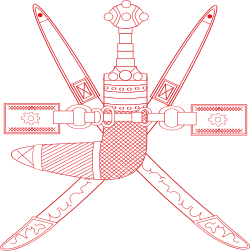This article needs additional citations for verification .(January 2013) |
| وزارة الثروة الزراعة و السمكية والمواد المياه | |
 | |
| Agency overview | |
|---|---|
| Jurisdiction | Government of Oman |
| Headquarters | Muscat 23°35′54″N58°25′39″E / 23.59833°N 58.42750°E |
| Agency executive |
|
| Website | Official website |
 |
|---|
|
| Cabinet |
The Ministry of Agriculture, Fisheries and Water Resource is the governmental body in the Sultanate of Oman responsible for all matters relating to agriculture, fisheries and water resources.